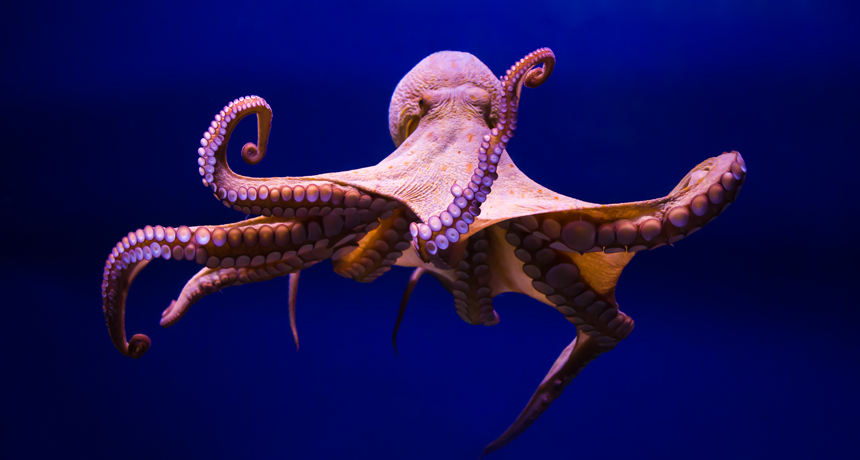camouflage Hiding people or objects from an enemy by making them appear to be part of the natural surroundings. Animals can also use camouflage patterns on their skin, hide or fur to hide from predators.
cell The smallest structural and functional unit of an organism. Typically too small to see with the unaided eye, it consists of a watery fluid surrounded by a membrane or wall. Depending on their size, animals are made of anywhere from thousands to trillions of cells. Most organisms, such as yeasts, molds, bacteria and some algae, are composed of only one cell.
marine Having to do with the ocean world or environment.
mollusks Soft-bodied invertebrate animals that usually live in water and develop a hard protective shell. Examples include snails, shellfish (like clams and oysters), slugs, octopuses and squids.
octopod An eight-armed cephalopod mollusk belonging to the order or suborder Octopoda. These animals include octopuses and paper nautiluses.
octopus Sea mollusks with a soft, sac-shaped body and eight tentacles. Two rows of suckers along each tentacle give the animal an ability to grasp and hold onto things. Cousins of the squids, these animals have a sharp beak-like mouth and good vision.
pigment A material, like the natural colorings in skin, that alter the light reflected off of an object or transmitted through it. The overall color of a pigment typically depends on which wavelengths of visible light it absorbs and which ones it reflects. For example, a red pigment tends to reflect red wavelengths of light very well and typically absorbs other colors. Pigment also is the term for chemicals that manufacturers use to tint paint.
sea An ocean (or region that is part of an ocean). Unlike lakes and streams, seawater — or ocean water — is salty.
tool An object that a person or other animal makes or obtains and then uses to carry out some purpose such as reaching food, defending itself or grooming.
